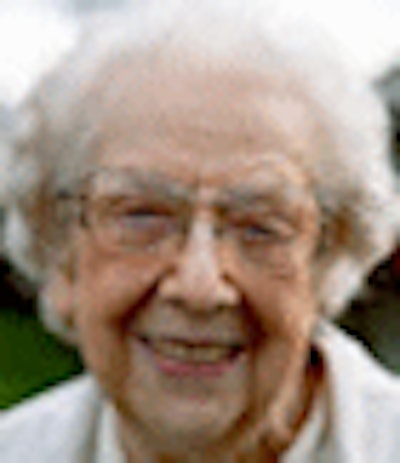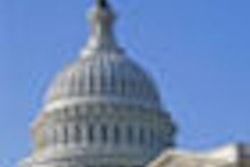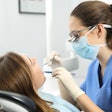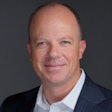
With Americans generally living longer -- and keeping more teeth in the process -- what happens to their oral health after they retire, when they often require more dental care than at any other point in their lives?
A series of papers published in the Journal of Public Health Dentistry (JPHD, published online ahead of print, September 2009, October 2009, and December 2009) examines this issue in detail using data from the National Institute on Aging's Health and Retirement Study (HRS). And the researchers aren't done yet; they have now submitted a follow-up article to the American Journal of Public Health that looks at the potential long-term effects on healthcare costs of retired persons when they do not get proper dental care.
— Richard Manski, D.D.S., M.B.A., Ph.D.,
University of Maryland Dental
School
"We've been following this for a few years," said Richard Manski, D.D.S., M.B.A., Ph.D., professor and director of the division of health services research at the University of Maryland Dental School. "We are trying to tell a story -- a big story -- piece by piece. As people face retirement, they face a double whammy: the loss of income and also the loss of having dental coverage if they had it through their employer."
While Medicare generally covers most U.S. retirees' healthcare needs, dental visits are rarely included -- a situation that has only worsened during the current economic crisis, as state after state trims adult Medicaid dental benefits from their budgets in an effort to tighten their belts, and the proposed federal healthcare reform legislation sits stalled in Congress. Thus Dr. Manski hopes this research will urge legislative decision-makers to look more closely at the benefits of adding adult dental benefits to Medicare.
"We make the case that providing Medicare coverage for people who otherwise wouldn't have [dental coverage] is a worthwhile cause," Dr. Manski said.
Dental care coverage
In the JPHD articles, Dr. Manski and colleagues from the University of Maryland Medical School and the University of Virginia analyzed data from the Health and Retirement Study, a longitudinal household survey conducted every two years by the Institute for Social Research at the University of Michigan on behalf of the National Institute on Aging. In each HRS survey, individuals over the age of 50 and their spouses are interviewed, resulting in approximately 20,000 interviews per survey.
The first article in the JPHD series focused on dental care coverage and retirement. Dr. Manski's team looked at dental insurance coverage data reported in the 2006 HRS, which had more than 16,000 participants. Dental coverage was identified in one of two ways:
- The respondent reported seeing a dentist for dental care during the two-year period preceding the survey and having expenses at least partially covered by insurance.
- The respondent did not see a dentist but reported that they would expect any costs to be covered by insurance if he or she did need to see a dentist.
The researchers found that being in the labor force is a strong predictor of having dental coverage, and that for older retired adults not in the labor force, the only source for dental coverage is either a postretirement health benefit such as COBRA or spousal coverage.
"Understanding the dynamics of retirement and dental insurance transitions and the associated effect on utilization is particularly important in the current economic climate," they wrote. "It is possible and indeed likely that the economic downturn will affect both the retirement decision of individuals and the offering of dental benefits to either current or retired workers."
In this environment, they added, "it is imperative that we better understand the relationship between retirement and dental coverage, including the availability of individual dental health insurance products, in order to identify the best ways of improving oral health and access to care among older Americans."
Dental care utilization
The second article in the series used the same data from the 2006 HRS but focused on self-reports of whether a person visited the dentist for dental care at least once during the two-year period prior to the survey. Overall, 66% of the survey respondents had a dental visit during the two-year period. The researchers found a gradient in the likelihood of use by retirement status: 75% of those not retired and in the labor force had a dental visit during the two-year period, compared to 71% of those partially retired, 62% of the fully retired, and 53% of those not retired and out of the labor force.
These findings led Dr. Manski's group to conclude that the loss of income and dental coverage associated with full retirement produces lower utilization of dental services, although this effect may be offset by other, unobserved aspects of retirement, including more available free time.
"Loss of dental coverage and income are the driving forces behind this effect as elderly people retire and leave the labor force," the researchers wrote. "Although there are secondary influences that work in the opposite direction, a policy of providing, at a minimum, coverage for preventive dental care to Medicare beneficiaries would be highly effective in promoting dental care and good oral health for our nation's elderly retirees who might currently lack such coverage."
Dental care expenditures
The most recent article in the series focused on the relationship of dental care coverage, retirement, and out-of-pocket (OOP) dental expenditures in an aging population, again using data from the 2006 HRS, in an effort to demonstrate that spending on dental care can increase after retirement.
Analyzing self-reports of the amount spent OOP for dental care during the two-year period prior to the survey, and focusing only on expenditures among those with OOP spending, Dr. Manski and his colleagues found that approximately two-thirds of the participants reported some amount of OOP spending during the two-year period. While mean spending was $951, expenditures among those without coverage were substantially larger than for those with coverage ($1,126 versus $776, respectively).
"The combination of decreased coverage and increased use suggests that spending on dental care among those who have dental expenditures may increase after retirement," the authors wrote. "Given that this is a time when most households rely on a fixed income, large OOP spending on dental care could lead to important financial consequences for older adults."
Other options
Despite efforts by some policymakers and research such as Dr. Manski's that supports the need to make oral healthcare more affordable and accessible for vulnerable populations, it is likely to be quite some time -- if ever -- before comprehensive dental benefits for seniors and other adults are added to Medicare.
In the meantime, seniors have a few options. For example, retirees can pay for dental benefits through private insurance funded by Medicare Advantage. But depending on what happens with the healthcare reform legislation pending in Congress, some U.S. seniors may lose the dental benefits they currently receive through that program.
In addition, through a relationship with Delta Dental, the AARP offers the AARP Dental Insurance Plan, a dental PPO for AARP members that includes more than 100,000 dentist locations across the U.S. Delta also offers individual plans that are "particularly popular among retirees," according to Chris Pyle, director of public relations and community benefits at Delta Dental.
"Delta Dental has been a pioneer in developing affordable dental insurance options for those who do not have coverage through an employer," he said. "Retirees who take the time to do the math are finding individual and family dental insurance plans to be a wise option."
Copyright © 2010 DrBicuspid.com



















